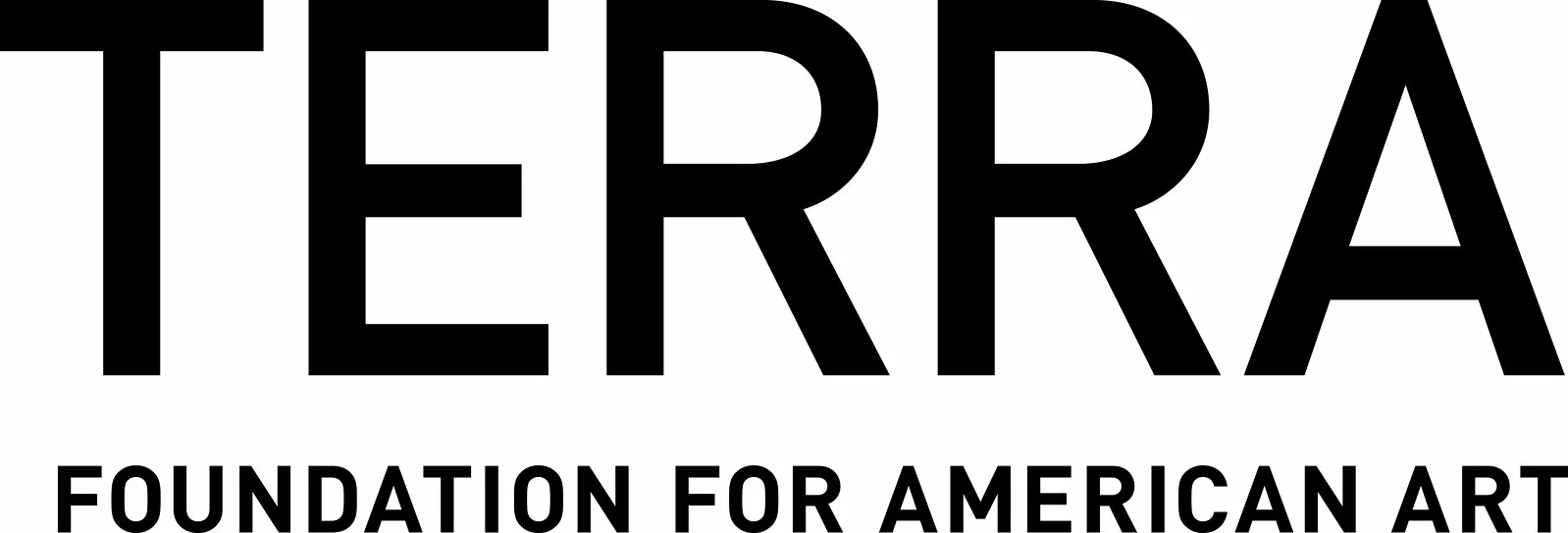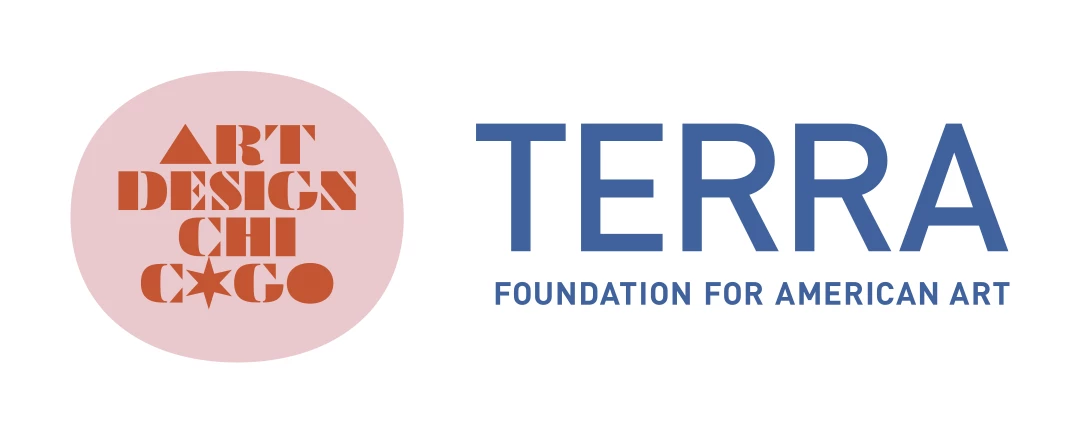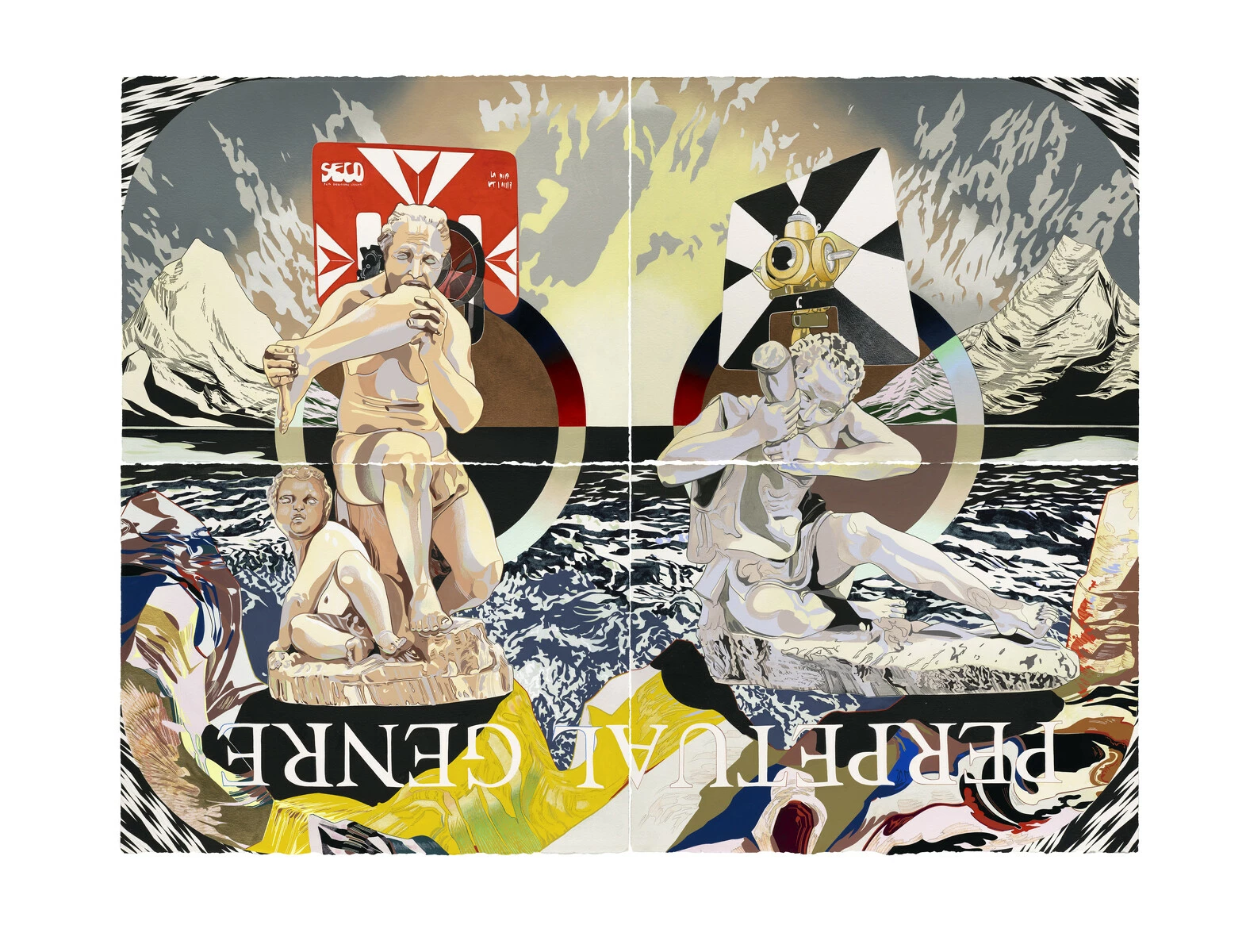About the Exhibition
Andrea Carlson (Grand Portage Ojibwe/European descent, b. 1979; based in northern Minnesota and Chicago, IL) considers how landscapes are shaped by history, relationships, and power. Her artworks imagine places that are “everywhere and nowhere,” visualizing these shifting yet ever-present dynamics. Grounded in Anishinaabe understandings of space and time, the works in this exhibition reflect on how land carries memories of colonial expansion and violence, as well as Indigenous presence and resistance.
Across painting, video, and sculpture, Carlson organizes imagined landscapes around one constant: the horizon. This line is reminiscent of her homelands on Lake Superior. It is also a significant art historical trope that artists have employed to depict territories as vast and vacant, ripe for the taking. Carlson’s prismatic works are not empty: they are densely layered with an abundance of motifs, making reference to the tactics of colonialism as well as her family and peers, Ojibwe culture, and Indigenous sovereignty. Confronting ongoing histories of erasure and dispossession, Carlson proposes that what appears to be lost can be remade, reimagined, or otherwise regained.
Andrea Carlson is the 26th artist to participate in Chicago Works, a solo exhibition series at the MCA that features artists who are shaping contemporary art in the city and beyond. The exhibition is presented in the MCA’s Turner Gallery, on the museum’s fourth floor.
Andrea Carlson: Shimmer on Horizons is curated by Iris Colburn, Curatorial Associate.
About the Artist
Andrea Carlson is an artist based in northern Minnesota and Chicago. Carlson’s work includes multimedia artworks, works on paper, and public art projects, including a billboard project at the Whitney Museum of American Art in 2021. Recently, Carlson participated in the Toronto Biennial, completed a residency at the Joan Mitchell Center, and was selected as part of Prospect.6, an upcoming triennial organized by Prospect New Orleans. Carlson received a 2021 Chicago Artadia Award, a 2022 United States Artists Fellowship, and a 2024 Creative Capital Award. The artist’s writing has appeared in books such as Indigenous Futurisms (IAIA Museum of Contemporary Indian Arts, 2020) and Jaune Quick-to-See Smith: Memory Map (Whitney Museum of American Art, 2023), as well as in online publications such as e-flux Architecture. Carlson is a co-founder of the Center for Native Futures, an art space dedicated to the work of Native artists in Chicago.
Funding
Lead support for Chicago Works | Andrea Carlson: Shimmer on Horizons is provided by R. H. Defares and the Zell Family Foundation.
Major support is provided by Charlotte R. Cramer Wagner and Herbert S. Wagner III of Wagner Foundation, and the Terra Foundation for American Art.
Generous support is provided by the Sandra and Jack Guthman Chicago Works Exhibition Fund.
Additional support is provided by Bockley Gallery, the Jessica Silverman Gallery, and D. Elizabeth Price and Lou Yecies.
This exhibition is supported by the MCA’s Women Artists Initiative, a philanthropic commitment to further equity across gender lines and promote the work and ideas of women artists.


Chicago Works | Andrea Carlson: Shimmer on Horizons is part of Art Design Chicago, a citywide collaboration initiated by the Terra Foundation for American Art that highlights the city’s artistic heritage and creative communities.

